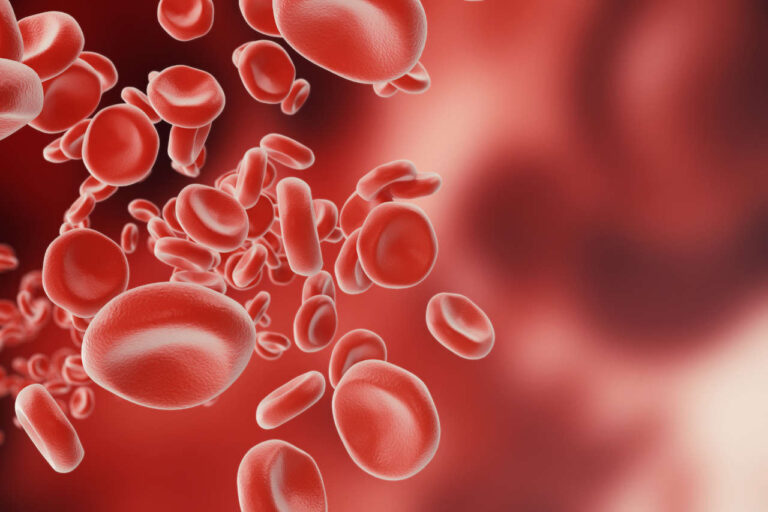
- Hiện tại vẫn chưa có phương pháp chữa trị bệnh thần kinh sợi nhỏ, nhưng việc kiểm soát nguyên nhân tiềm ẩn có thể cải thiện hoặc đảo ngược các triệu chứng.
- Các phương pháp điều trị bệnh lý thần kinh sợi nhỏ bao gồm thuốc ức chế miễn dịch, liệu pháp IVIG, thuốc giảm đau, kem bôi ngoài da, thuốc phiện, thuốc chống co giật và thuốc chống trầm cảm.
- Các phương pháp điều trị mới như liệu pháp gen, kháng thể đơn dòng và thuốc chẹn kênh natri hứa hẹn sẽ giúp kiểm soát bệnh trong tương lai.
Bệnh lý thần kinh sợi nhỏ (SFN) là một tình trạng mãn tính đặc trưng bởi tổn thương các sợi thần kinh nhỏ chịu trách nhiệm truyền cảm giác đau, nhiệt độ và chức năng tự chủ.
Vì bệnh ảnh hưởng đến các dây thần kinh ngoại biên, việc kiểm soát các triệu chứng có thể rất khó khăn. Tuy nhiên, hiện nay có các phương pháp điều trị bệnh thần kinh sợi nhỏ hiệu quả giúp bệnh nhân có cuộc sống tốt hơn.
Để điều trị tổng thể cơn đau trong bệnh lý thần kinh sợi nhỏ, nhiều hướng dẫn điều trị mới đề xuất sử dụng thuốc chống trầm cảm, thuốc phiện, liệu pháp tại chỗ và liệu pháp không dùng thuốc. Các phương pháp này nhằm mục đích giảm đau và kiểm soát các triệu chứng thần kinh thực vật.
Trong hướng dẫn này, chúng tôi sẽ xem xét các phương pháp điều trị tốt nhất cho bệnh lý thần kinh sợi nhỏ dựa trên nguyên nhân cơ bản và các triệu chứng mới xuất hiện. Chúng tôi cũng sẽ khám phá các phương pháp chữa trị tiềm năng cho bệnh lý thần kinh sợi nhỏ để giúp bạn hiểu rõ hơn về tình trạng phức tạp này.
Nhận hỗ trợ đồng thanh toán IVIG
Nói chuyện với một chuyên giaPhương pháp điều trị bệnh lý thần kinh sợi nhỏ
Việc lựa chọn phương pháp điều trị bệnh lý thần kinh sợi nhỏ phù hợp sẽ khác nhau tùy thuộc vào nguyên nhân cơ bản. Điều trị không đúng cách có thể dẫn đến các triệu chứng như đau rát hoặc đau nhói và tăng cảm giác.
Nền tảng cơ bản nguyên nhân gây bệnh thần kinh sợi nhỏ phải được điều trị kết hợp với bất kỳ cơn đau thần kinh nào liên quan. Khi một người kiểm soát hoặc được điều trị bệnh lý nền, các triệu chứng bệnh thần kinh của họ có thể cải thiện hoặc biến mất hoàn toàn.
Giải quyết các nguyên nhân cơ bản của bệnh lý thần kinh sợi nhỏ
Một loạt các tình trạng, bao gồm bệnh tiểu đường, rối loạn chức năng tuyến giáp và HIV, cũng như các bệnh khác, có thể dẫn đến bệnh lý thần kinh sợi nhỏ. Trong một số trường hợp, chẩn đoán bệnh lý thần kinh sợi nhỏ cũng có thể được coi là "vô căn".
Tuy nhiên, đau thường là triệu chứng khó chịu nhất của bệnh, bất kể nguyên nhân cơ bản là gì. Do đó, điều trị bệnh lý thần kinh sợi nhỏ được thiết kế để kiểm soát các triệu chứng đau cũng như xác định và điều trị nguyên nhân cơ bản.
Điều này đòi hỏi những người mắc bệnh tiểu đường hoặc các rối loạn chuyển hóa khác phải kiểm soát lượng đường trong máu, duy trì cân nặng cơ thể khỏe mạnh và tiêu thụ chế độ ăn uống cân bằng, bổ dưỡng.
Tập thể dục thường xuyên và bỏ thuốc lá có thể hỗ trợ chữa lành các mạch máu bị hẹp, nơi vận chuyển chất dinh dưỡng quan trọng đến các dây thần kinh.
Có cách chữa trị bệnh thần kinh sợi nhỏ không?
Hiện tại, chưa có phương pháp chữa trị dứt điểm hội chứng SFN. Tuy nhiên, việc kiểm soát nguyên nhân cơ bản đôi khi có thể cải thiện triệu chứng hoặc thậm chí đảo ngược tình trạng.
Những tiến bộ trong nghiên cứu vẫn đang được tiếp tục, và các phương pháp điều trị mới cho bệnh lý thần kinh sợi nhỏ vẫn đang tiếp tục xuất hiện. Ngoài ra, với chẩn đoán sớm và kế hoạch điều trị cá nhân hóa, bệnh nhân có thể giảm bớt các triệu chứng và cải thiện chất lượng cuộc sống.
Phương pháp điều trị tiêu chuẩn cho bệnh lý thần kinh sợi nhỏ

Xử lý sợi nhỏ bệnh thần kinh (SFN) tập trung vào việc kiểm soát các triệu chứng và giải quyết các nguyên nhân cơ bản. Việc kiểm soát triệu chứng tập trung vào việc giảm đau liên quan đến bệnh lý thần kinh sợi nhỏ.
Chìa khóa để cải thiện các triệu chứng và ngăn ngừa sự tiến triển của bệnh lý thần kinh sợi nhỏ là điều trị theo nguyên nhân cụ thể. Các lựa chọn điều trị được lựa chọn dựa trên:
- Bệnh đi kèm: Các tình trạng sức khỏe khác như bệnh tiểu đường, rối loạn tự miễn dịchhoặc tình trạng thiếu hụt vitamin có thể ảnh hưởng đến lựa chọn điều trị và tác động đến các chiến lược quản lý tổng thể.
- Thuốc dùng đồng thời: Thuốc đang được sử dụng cho các tình trạng khác, chẳng hạn như thuốc chống đông máu và một số thuốc chống trầm cảm có thể tương tác với các phương pháp điều trị bệnh thần kinh sợi nhỏ và cần phải lựa chọn liệu pháp cẩn thận để tránh tác dụng phụ.
- Hồ sơ an toàn: Nguy cơ tác dụng phụ hoặc biến chứng liên quan đến phương pháp điều trị sẽ khác nhau ở mỗi bệnh nhân, giúp bác sĩ lâm sàng lựa chọn phương án phù hợp nhất đồng thời giảm thiểu các phản ứng có hại.
Sau đây là tổng quan về các phương pháp điều trị tốt nhất cho bệnh lý thần kinh sợi nhỏ.
Thuốc ức chế miễn dịch
Mặc dù không có cách chữa trị bệnh thần kinh sợi nhỏ, thuốc ức chế miễn dịch có thể được kê đơn để giúp kiểm soát các triệu chứng của SFN. Những loại thuốc này được khuyến nghị cho bệnh nhân mắc bệnh tự miễn. Chúng ức chế hệ thống miễn dịch và giảm viêm.
Ví dụ về phương pháp điều trị ức chế miễn dịch cho bệnh lý thần kinh sợi nhỏ bao gồm:
- Azathioprine
- Cyclosporin
- Methotrexate
- Mycophenolate mofetil
- Corticosteroid (ví dụ, prednisone)
Liệu pháp IVIG
Có bằng chứng mới cho thấy rằng immunoglobulin tiêm tĩnh mạch Điều trị (IVIG) cho bệnh lý thần kinh sợi nhỏ có thể giảm đau và tăng cường mật độ sợi thần kinh khách quan trên sinh thiết da.
Một số bệnh nhân mắc SFN do các nguyên nhân khác có thể được hưởng lợi từ phương pháp điều trị IVIG, giúp bệnh nhân cảm thấy dễ chịu hơn.
Một loạt trường hợp của hội chứng Sjögren liên quan đến SFN cho thấy sự cải thiện liên tục sau khi điều trị bằng IVIG. Trong một lớn nhóm họcIVIG cũng có tác dụng điều trị bệnh lý thần kinh sợi nhỏ liên quan đến bệnh sarcoidosis.
Do số lượng người tham gia thử nghiệm lâm sàng còn hạn chế, việc tiến hành các nghiên cứu như vậy có thể gặp khó khăn. Các nghiên cứu có đối chứng trong tương lai sẽ cần thiết để xác định liệu điều trị IVIG có hiệu quả ở những người mắc bệnh thần kinh sợi nhỏ vô căn liên quan đến tự kháng thể hay không.
Nhận liều IVIG của bạn
Truyền dịch tại nhàThuốc giảm đau có chứa opioid hoặc thuốc gây nghiện
Nếu không có cách chữa trị bệnh thần kinh sợi nhỏ, việc kiểm soát cơn đau trở nên vô cùng quan trọng. Thuốc phiện và chất gây nghiện-thuốc dựa trên là những tác nhân mạnh có thể giúp giảm đau liên quan đến bệnh. Ví dụ về các loại thuốc này bao gồm:
- Morphine
- Methadone
- Oxycodone
- Levorphanol
- Hydromorphone
Những loại thuốc này hoạt động bằng cách gắn vào các thụ thể opioid trong não và tủy sống để chặn tín hiệu đau và làm giảm đau.
Chúng không phải là phương pháp điều trị tốt nhất cho bệnh lý thần kinh sợi nhỏ do tính chất gây nghiện của chúng. Do đó, chúng thường được coi là lựa chọn thứ hai hoặc thứ ba cho các cơn đau dữ dội hoặc đột ngột khi các phương pháp điều trị khác không hiệu quả.
Miếng dán và kem bôi Lidocaine
Miếng dán Lidocaine và chủ đề kem là phương pháp điều trị bệnh lý thần kinh sợi nhỏ tại chỗ giúp giảm đau thần kinh khu trú. Các sản phẩm này đưa lidocaine trực tiếp vào da tại các vùng bị đau.
Lidocaine làm giảm tính thấm của màng tế bào thần kinh đối với các ion natri, từ đó ức chế sự dẫn truyền thần kinh và làm giảm tín hiệu đau.
Chúng thường được sử dụng cho các vùng đau cụ thể, đặc biệt khi cơn đau chỉ giới hạn ở một vùng nhỏ. Tuy nhiên, hiệu quả của chúng có thể bị hạn chế nếu cơn đau lan rộng hoặc không khu trú. Kích ứng da tại vị trí bôi thuốc cũng có thể xảy ra.
Những người có phản ứng dị ứng với các thành phần trong liệu pháp bôi ngoài da này có thể cần cân nhắc phương pháp điều trị mới cho bệnh lý thần kinh sợi nhỏ.
Thuốc chống co giật
Chống co giật Các phương pháp điều trị được kê đơn cho chứng đau thần kinh trong bệnh lý thần kinh sợi nhỏ. Các loại thuốc trong nhóm này bao gồm:
- Pregabalin (ví dụ, Lyrica)
- Gabapentin (ví dụ, Horizant, Gralise)
Mặc dù những phương pháp này không chữa khỏi bệnh thần kinh sợi nhỏ, nhưng chúng có thể điều chỉnh hoạt động thần kinh bằng cách tác động lên các kênh canxi phụ thuộc điện thế. Tác động này làm giảm sự kích thích thần kinh bất thường gây ra cảm giác nóng rát, giật hoặc ngứa ran.
Những loại thuốc này thường là lựa chọn điều trị đầu tay do hiệu quả và khả năng dung nạp đã được chứng minh. Tuy nhiên, chúng có thể gây ra các tác dụng phụ như chóng mặt, mệt mỏi hoặc tăng cân.
Thuốc chống trầm cảm
Thuốc chống trầm cảm, đặc biệt là thuốc ba vòng (TCA) như amitriptyline và thuốc ức chế tái hấp thu serotonin-norepinephrine (SNRI) như duloxetine, được sử dụng rộng rãi để kiểm soát đau thần kinh. Các phương pháp điều trị bệnh thần kinh sợi nhỏ khác trong nhóm này bao gồm:
- Nortriptyline (ví dụ, Aventyl)
- Desipramine (ví dụ, Norpramin)
- Venlafaxine (ví dụ, Effexor)
Thuốc chống trầm cảm ảnh hưởng đến nhận thức về cơn đau bằng cách điều chỉnh các chất dẫn truyền thần kinh liên quan đến các con đường dẫn truyền cơn đau.
Chúng là nền tảng trong điều trị đau thần kinh. Tuy nhiên, chúng có thể mất vài tuần mới thấy hiệu quả và cần được theo dõi chặt chẽ về liều lượng và tác dụng phụ, đặc biệt là ở người cao tuổi hoặc người có vấn đề về tim.
Phương pháp điều trị mới cho bệnh lý thần kinh sợi nhỏ
Các liệu pháp mới đang cho thấy tiềm năng kiểm soát tình trạng này tốt hơn. Dưới đây là một số phương pháp điều trị mới nổi đầy hứa hẹn nhất cho bệnh lý thần kinh sợi nhỏ.
Các tác nhân dược lý mới
- Thuốc chẹn kênh natri (ví dụ, lacosamide nhắm mục tiêu đột biến NaV1.7): Giảm tình trạng kích thích thần kinh quá mức bằng cách chặn các kênh natri hoạt động quá mức.
- Kháng thể đơn dòng: Nhắm mục tiêu các thành phần miễn dịch liên quan đến SFN liên quan đến tự miễn dịch để điều chỉnh tình trạng viêm.
- Lacosamide: Điều trị đặc hiệu các đột biến NaV1.7 để giảm đau và tăng hoạt động thần kinh.
Liệu pháp gen và mục tiêu phân tử
- Đột biến kênh natri (SCN9A, SCN10A, SCN11A): Biến thể di truyền gây ra tín hiệu thần kinh bất thường trong bệnh lý thần kinh sợi nhỏ, với các phương pháp điều trị nhằm mục đích khắc phục những khiếm khuyết này.
- Chỉnh sửa gen: Tiềm năng chỉnh sửa gen chính xác để sửa chữa nguyên nhân di truyền cơ bản của bệnh.
Nhận Chăm sóc cho SFN với AmeriPharma® Specialty
Mặc dù chưa có phương pháp chữa trị dứt điểm bệnh lý thần kinh sợi nhỏ, nhiều bệnh nhân đã tìm thấy sự cải thiện thông qua các phác đồ điều trị cá nhân hóa. Các nghiên cứu mới đang tiếp tục khám phá các phương pháp điều trị mới cho bệnh lý thần kinh sợi nhỏ nhằm cải thiện kết quả và giảm biến chứng.
Phương pháp điều trị tốt nhất cho bệnh thần kinh sợi nhỏ bao gồm sự kết hợp giữa thuốc, thay đổi lối sống và các liệu pháp hỗ trợ. Nếu bạn muốn có cơ hội tốt nhất để sống trọn vẹn với căn bệnh này, Nhà thuốc chuyên khoa AmeriPharma® có thể giúp.
Được chứng nhận ACHC của chúng tôi hiệu thuốc chuyên khoa cung cấp các loại thuốc khó tìm và phương pháp điều trị tại nhà cho bệnh nhân mắc các bệnh lý phức tạp.
Đặt cuộc gọi với chúng tôi ngay hôm nay và bắt đầu nhận được điều trị bệnh thần kinh sợi nhỏ với sự phối hợp dịch vụ đầy đủ, hỗ trợ đồng thanh toánvà hỗ trợ 24/7/365.
TÀI LIỆU THAM KHẢO:
- Smith AG, Russell J, Feldman EL, Goldstein J, Peltier A, Smith S, Hamwi J, Pollari D, Bixby B, Howard J, Singleton JR. Can thiệp lối sống cho bệnh thần kinh tiền đái tháo đường. Chăm sóc bệnh tiểu đường. 2006 tháng 6; 29 (6): 1294-9. doi: 10.2337/dc06-0224. PMID: 16732011.
- Pindi Sala T, Villedieu M, Damian L, Crave JC, Pautot V, Stojanovich L, Tervaert JWC, Cherin P, Belizna C. Hiệu quả lâu dài của immunoglobulin trong bệnh lý thần kinh sợi nhỏ liên quan đến hội chứng Sjögren. J Neurol. Tháng 12 năm 2020; 267 (12): 3499-3507. doi: 10.1007/s00415-020-10033-z. Epub ngày 1 tháng 7 năm 2020. PMID: 32613444.
- Tavee JO, Karwa K, Ahmed Z, Thompson N, Parambil J, Culver DA. Bệnh lý thần kinh sợi nhỏ liên quan đến bệnh sarcoidosis trong một nhóm lớn: Các khía cạnh lâm sàng và đáp ứng với điều trị IVIG và thuốc kháng TNF alpha. Respir Med. Tháng 5 năm 2017; 126: 135-138. doi: 10.1016/j.rmed.2017.03.011. Epub ngày 9 tháng 3 năm 2017. PMID: 28318820.
- Geerts M, de Greef BTA, Sopacua M, van Kuijk SMJ, Hoeijmakers JGJ, Faber CG, Merkies ISJ. Liệu pháp globulin miễn dịch tiêm tĩnh mạch ở bệnh nhân bị bệnh thần kinh sợi nhỏ vô căn gây đau đớn. Thần kinh học. 2021 ngày 18 tháng 5;96(20):e2534-e2545. doi: 10.1212/WNL.0000000000011919. Epub 2021 Ngày 25 tháng 3. PMID: 33766992; PMCID: PMC8205474.













